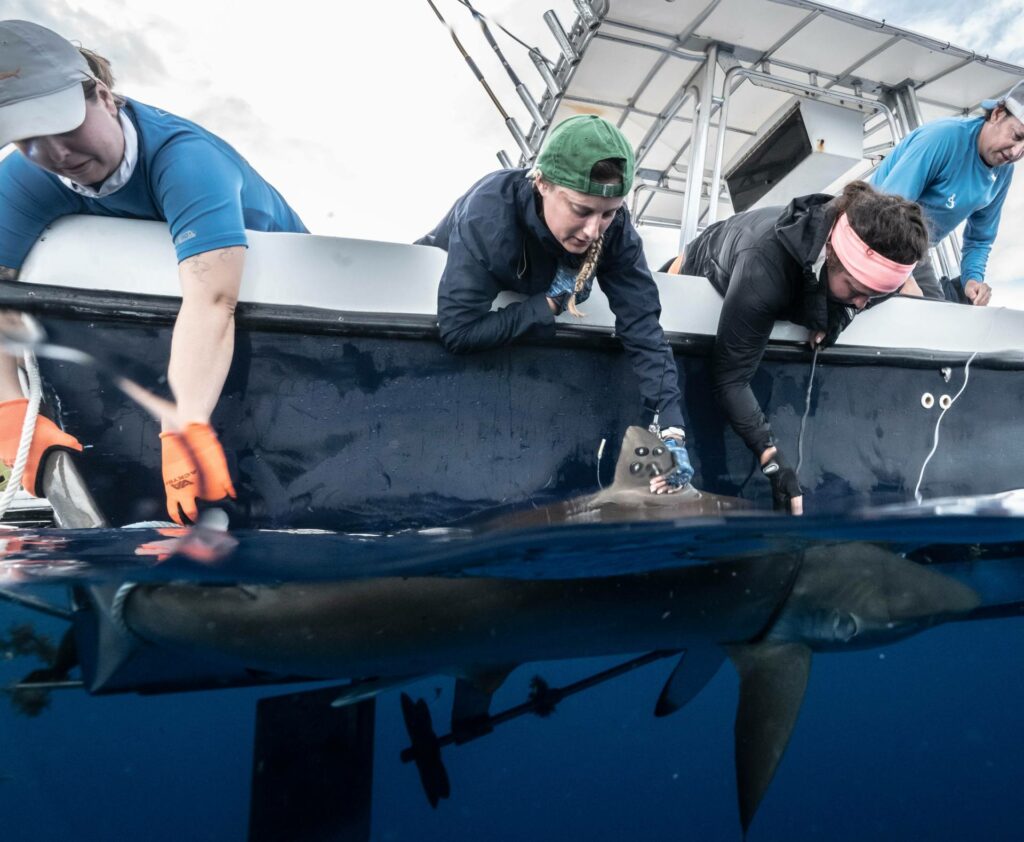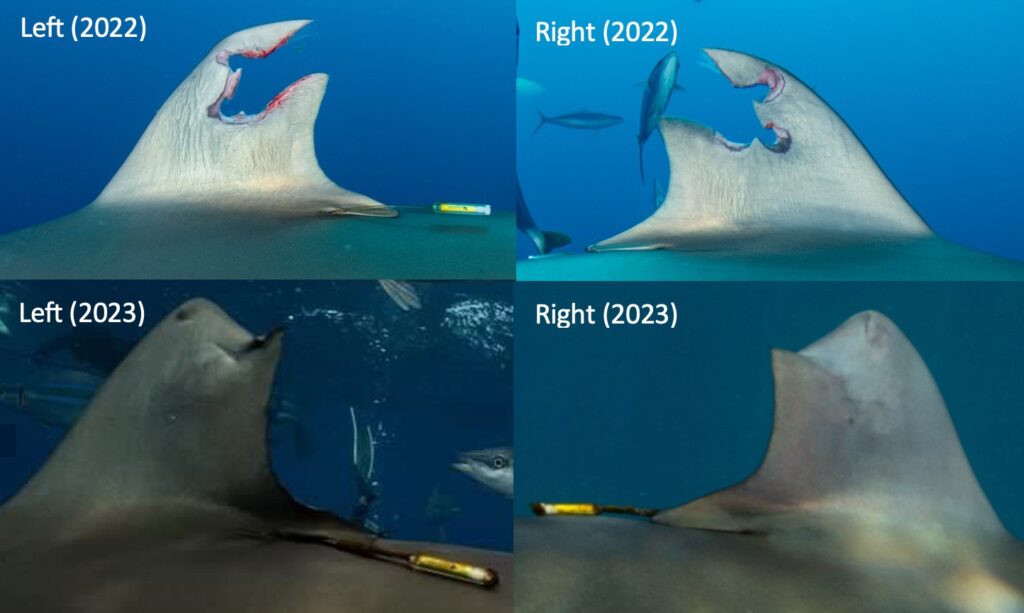‘Then’ and ‘now’ underwater images taken by scuba divers have confirmed a dramatic instance of tissue regeneration in a silky shark, the dorsal fin of which had been mutilated almost a year before it returned to Jupiter, Florida.
In July 2022, underwater photographer Josh Schellenberg had captured images of the adult male shark and noted the unusually shaped cut-out in its dorsal fin. The diver was aware of a University of Miami study in the area that had involved satellite-tagging several silky sharks a few weeks earlier, so submitted his photos to the shark-research team.
“Tissue-regeneration and wound-healing remain extremely understudied in elasmobranchs, as many wounds are recorded through one-off opportunistic observations, with an inability for long-term monitoring of individuals,” says marine scientist Chelsea Black, who had led the original tagging and whose study has now been published.

The shape cut out of the dorsal fin matched the size of the tag and its precision and pattern suggested that a sharp implement had been used. More than a fifth of the fin had been removed.
“Silky sharks are commonly captured by recreational fishermen in this area during the summer months but are illegal to retain, increasing the likelihood that this shark may have been captured during a fishing trip and the tag opportunistically removed,” says Black – though why anyone would do that is unclear.

The shark was not spotted again during 2022, having presumably continued on its seasonal migration, but last June it was back in Jupiter. A number of divers photographed it, including Schellenberg and a John Moore, who passed their images on to Black.
Although the silky’s dorsal fin now looked almost intact, she could tell not only from the tag number but from the coloration of the repaired area that it was the same individual.

“This provided a unique opportunity to investigate how the shark recovered from a large wound through photo evidence over a known period – and calculate healing rates for the first time in this species,” says Black. Eleven months after the injury had been recorded, the newly shaped fin had already healed to 87% of its original size, involving tissue regeneration of 10.7% of the fin area.
The initial wound was calculated to have closed completely within 42 days, in line with known elasmobranch healing rates.
Such proof of rapid tissue regeneration had rarely been available before. Only one previous dorsal-fin regeneration had been documented, in a whale shark that had lost the top of its fin but had grown it back completely within five years. Impressive recoveries from lacerations had also been observed in various shark species and in reef manta rays.
Base for growth
“There was enough remaining fin to fuse together, and this may serve as a base for continued growth that would be missing in a full amputation of the fin,” says Black.
“It is possible that the fin regrowth of this silky shark lacks the cartilaginous fin rays, and comprises only scar tissue and dermal denticles,” she acknowledges, going on to add that the study underscores the importance of further research to understand how sharks respond to traumatic injury in the face of mounting environmental challenges.

“While this injury provided the first record of fin regeneration in silky sharks, the data collected by the satellite tag could have provided data to better protect and conserve an entire species,” Black points out.
“This study exemplifies the power of collaboration between researchers and the public, including photographers and divers, to expand the scope of research studies and bridge the gap between science and society.”
Black is currently working as scientific officer with a body repurposing shark-boats for tourism, Project Hiu in Lombok, Indonesia, and her tissue-regeneration study has been published in the Journal of Marine Sciences.
Also on Divernet: Slug head with a life of its own, Ain’t got no body: Why starfish are just crawling heads, Divers catch grey reef sharks napping, In-depth study reveals surprising depths of shark dives, Sharks: Older Than Trees on YouTube

